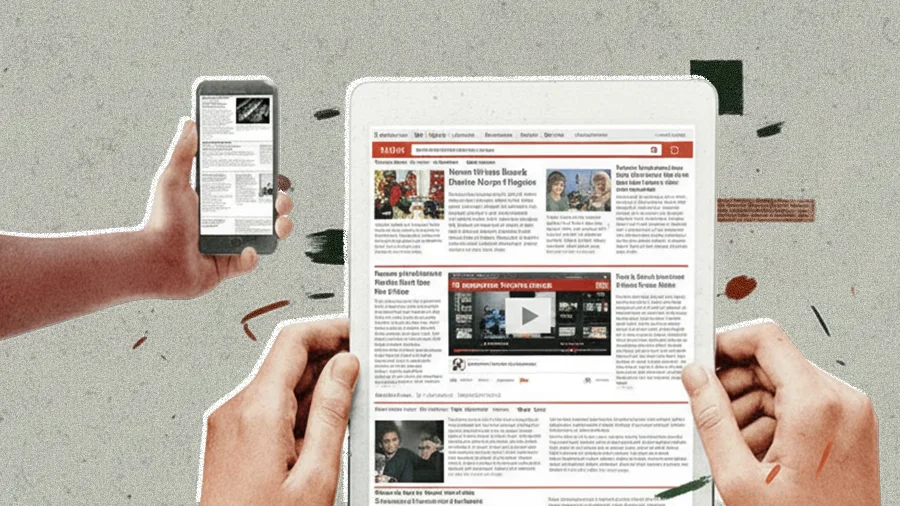


Erik Candiani, Director of Marketing at Nexstar Media Group, maintains a strict separation between AI use in marketing and journalism to maintain trust.
AI is utilized for creative marketing solutions, such as simulating drone shots and fantastical scenarios, without compromising news integrity.
Candiani ensures on-air talent is informed and approves AI usage, maintaining transparency and trust with both the team and audience.
He highlights the importance of trust and responsible AI use to maintain viewer confidence and journalistic credibility.
As generative AI reshapes marketing, news organizations are treading a careful line. In a business built on trust, the rule is clear: AI belongs in marketing innovation, but it has no place in the newsroom. That boundary allows creative teams to experiment with the cinematic potential of AI while protecting the journalistic integrity of the brand.
Erik Candiani is the Director of Marketing for KXAN in Austin, part of Nexstar Media Group, which is home to America’s largest local broadcasting network. With decades of experience leading creative teams at Paramount and Fox Broadcasting Company, the 15-time Emmy winner has built a career on evolving with the medium. Now, he’s drawing a line in the sand: AI can power the promos, but the news stays human.
"You have to be very cautious on the news side. On the marketing side, our job is to grab attention and create spots that look higher-end at a local level. But the moment viewers hear 'AI,' they think, 'I don’t want to see something fake.' And once that happens, it can undermine the credibility of real reporting, and that’s a line you can never cross," Candiani says. The framework has allowed his team to use AI for two purposes: creating obvious fantasy or solving production problems.
Sky's the limit: "It’s really difficult to do drone work here in or around Texas because there are a lot of regulations. So we used a stock shot of the river and did a simple move on it so it looked like a drone shot over the Capitol," explains Candiani. In this case, AI is a creative workaround that lets his team capture the feeling of flying through Austin’s skyline without breaking the rules or the audience’s trust.
Fact or fantastical: "For one of our earlier videos, we created a giant longhorn stomping through the streets of Austin, and I think people know that’s not real. I don’t have to disclose that," he notes. The scene captures his philosophy on AI: it can stretch imagination, but never at the cost of authenticity.
That balance between imagination and integrity doesn’t end with the visuals. For Candiani, the same rules apply to the people who bring those stories to life. Protecting how talent appears on screen is just as important as protecting the truth behind the image.
Face value: "Our on-air talent are the face of the station, so they have to be comfortable with how their likeness is used. Anytime AI is involved, we make sure they know exactly what we’re doing and why. It’s their face, their trust. We never take that lightly," Candiani explains. For Candiani, AI opens new creative doors, but only when every person in the frame knows they’ve walked through it together.
Transitions, not tricks: "Right now, we’re using AI for transitions. We’re not going to fake talent. I don’t see that happening," Candiani notes. "Maybe we’ll use it to fill in a crowd or make a background look like an event, but that’s it. It’s creative, not pretending something happened." He sees AI’s power in stitching scenes together, bridging shots, enhancing motion, and adding cinematic flow without ever crossing the line between effect and illusion.
Mastering AI on screen also means rethinking what happens behind the camera. Candiani and his team have learned that getting the best results often starts long before the render begins.
Shooting for AI: "We’ve started thinking differently about how we shoot. If we know a spot will use AI, we plan every frame with that in mind. We might have talent start with a foot already lifted or a mouth closed before speaking so the motion reads cleanly once the AI takes over," says Candiani. These subtle adjustments help the technology interpret intent, blending real footage with digital effects more seamlessly. For him, learning to shoot for AI is about evolving the craft, not replacing it.
Every choice about AI, from the shots to the transitions, comes down to trust. Viewers need to believe what they're seeing, and the people behind the scenes need to believe in how it's made. Without that foundation, even the most impressive visuals lose their meaning. "Trust. It’s a lot of trust," Candiani concludes. "You have to earn it with your team and with your audience. Once people see that you are using these tools responsibly, they will keep believing in the work."